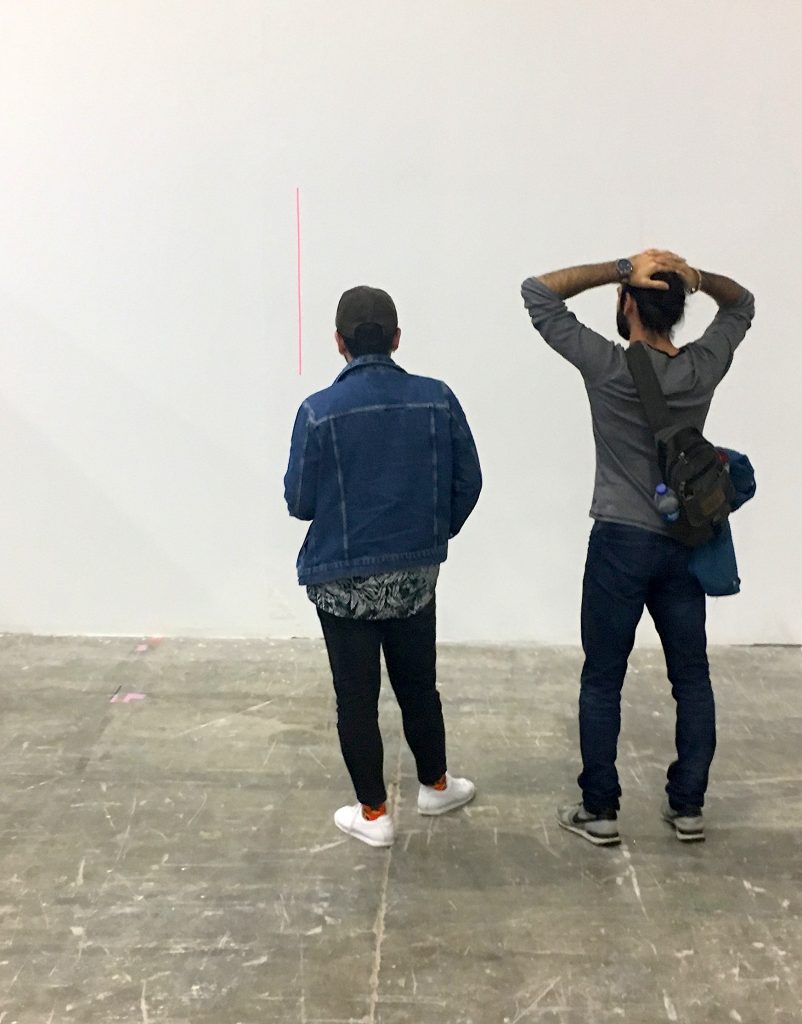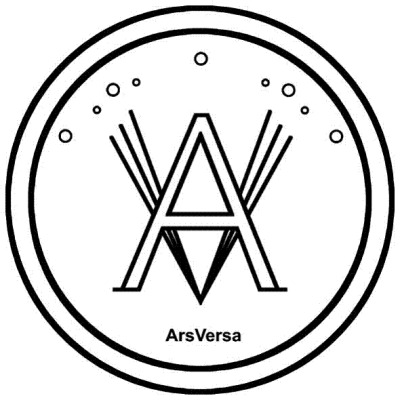
EXHIBITION 23.04 – 29.05.2020
Veronika Wenger’s works require a sensitivity and truth for the material, in the way the material embodies the consciousness of an artist. In the search for truth, ‘the beautiful work’ is a by-product of this search. The artistic production embodies the invisible and inner, a remnant, left behind traces of the experienced. The power of her works becomes visible in super+Centercourt. Our conscious experience is based on a complex accumulation of memory and unconscious material, which forms both our sense of self-identity and the basis of our relationship to experience. Wenger attempts to “hold” this in an intense performative act of drawing. In addition to the two large-format drawings, the artist will create a wall piece in the super+Centercourt during the course of the exhibition and allow us to participate in this very process of creation.
Black and white lines that fling in and out of each other, centripetal and centrifugal forces, rhythms, dynamically flowing traces, both positive and negative; remnants. Between found and invented, unconscious and conscious, past and present, between original and alienated, Veronika Wenger’s works reveal a sensual insight to us.
Outlines and volumes of a woman’s body, a dancer barely recognizable – the plastic appears only as a formal quality. The physical not only determines our perception, the physical is found on the side of the perceived. The abstract drawings make it clear that the body has by no means been abolished, but (merely) the modalities of its representation have been transformed. To see Wenger’s drawings is like listening to them read aloud in another language that simultaneously evokes linear and open spatial surfaces, to put it somewhat paradoxically. Her works move between a free figuration, free from all description of the object, and a poetizing figuration of often only vaguely hinted at architectures, figures or language. The possibilities of drawing are carefully explored: linear and coloured movements, rhythmic structures, still and delicate, dynamic and rapid. But the drawings on paper, MDF and cardboard show nothing of physical reality, they are not even abstract in the sense that they are a shortage of something found, they are simply non-representational. On a monochrome ground, lines, fleeting strokes, are to be found, which stretch, cross and circle. Colour is added, but remains locally limited – which makes them all the more expressive.
They are fragments, signs, forms, traces, letters and lines of a mental, inner world. It is the presence and absence of the trace, its appearance and disappearance, its storage and being remembered or its loss and lost absence that draws us into the spell of her works.
The proximity of memory to writing, one of her vehicles, is obvious. Writing frees daily facts from the pull of forgetting. But at the same time it translates all primary experiences (what we see before us, what happens to us, even the shaking of love and death). Thus the works appear as a meaningful juxtaposition of chaos and straightforwardness that creates a dialogue between memories of traces, choreography, dance or performance. A cosmos of connections and references that can be found again and again in the serial works. A continuous element is the line, it separates and connects at the same time. The emotional-objective lines, whose beautiful autonomy can be addictive, frees the line from the ground or the ground from the line, and yet both are preserved. It connects the visible forms to an endless connection between inside and outside, surface and form. It reinforces a symmetry of depth dimension. Through its rhythmic division, the experience of depth, movement, the conscious and the unconscious is created, whereby the works not least gain in temporality.
Veronika Wenger, 1967, lives and works in Munich. She studied from 1990 – 1996 at the Academy of Arts in Munich. She teaches at various academies in Germany and abroad, including Wuhan, Zurich, University of Hertfordshire, Tehran. Numerous exhibitions at home and abroad, e.g. Amsterdam, Istanbul, London, Odessa, Berlin, Istanbul Art Fair Tüyap. Further information about the artist can be found at www.veronikawenger.de.
The super+Centercourt will be temporarily closed. However, on request and in a private setting, we offer you guided tours and discussions with the artist. If you are interested, please register via mail info@centercourt.gallery or by phone at 01724703315.
The exhibition program will also be accompanied by talks, interviews and the catalogue of the same name published on the web via Facebook, Instagram and on our homepage.
Curated by Sophie-Charlotte Bombeck

opening times by appointment only
adalbertstr. 44
80799 münchen
mobil: +49 172 470 3315
info@centercourt.gallery
www.centercourt.gallery







